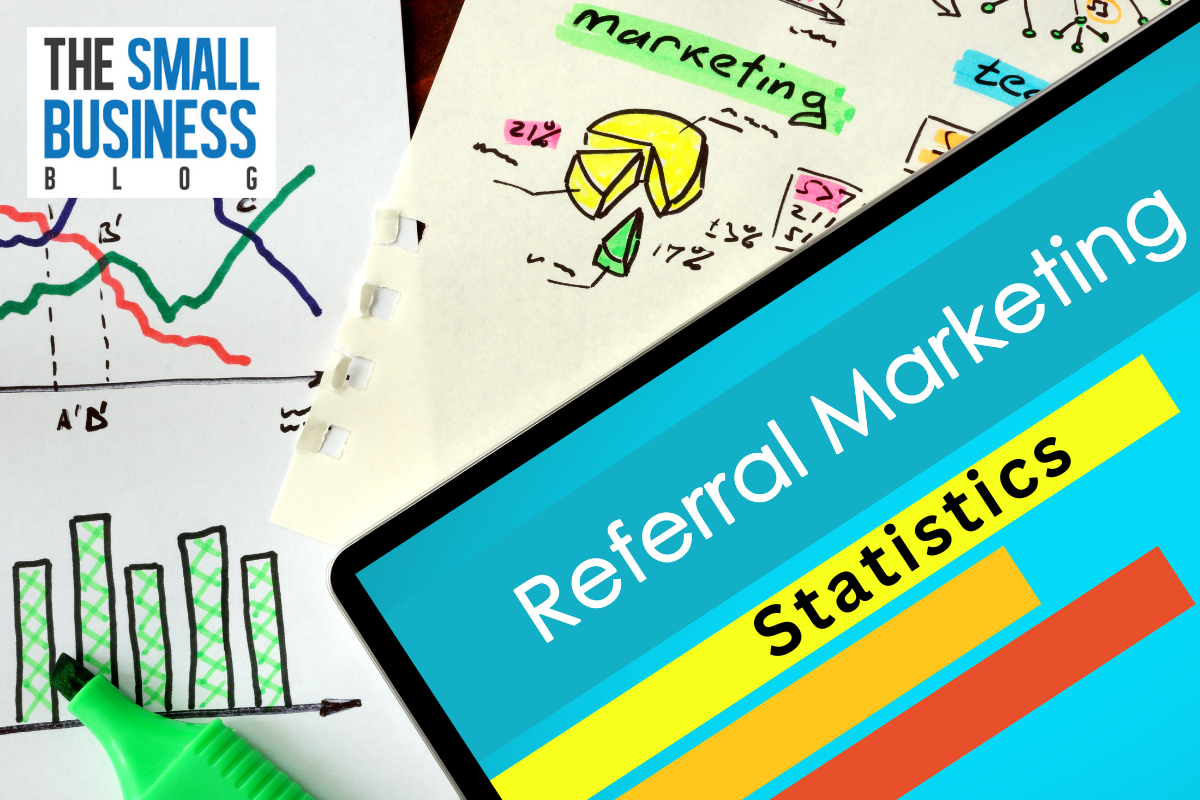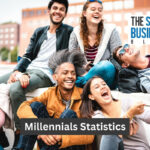Business growth is driven in a multitude of ways, but referral marketing is one of the most used and effective methods.
In the following referral marketing statistics, you will find out how well this method works and more about this word-of-mouth style of lead generation that results in referrals.
We will learn that most people do trust their family and friends when they recommend products or services to them.
This is one of the primary ways companies use to gain new customers.
Most of the time, businesses offer some kind of reward for referrals to encourage the idea of referring others.
Since referred customers are more likely to be converted into loyal customers who also refer others, this type of marketing can be great for your company’s bottom line.
Let’s look at the statistics to find out more about referral marketing, how it works, and more.
Post Contents
- 1 Key Statistics
- 2 Top Referral Marketing Statistics in 2024
- 2.1 1. 92% of Global Consumers Say They Trust Recommendations from Family and Friends.
- 2.2 2. 89% of Marketing Professionals Use Email Marketing for Lead Generation (Referrals).
- 2.3 3. In 2020, the Most Effective Referral Reward Type Was “Dollar Credit”.
- 2.4 4. There Are 2.4 Billion Brand-Centric Conversations Occurring in The United States Daily.
- 2.5 5. 51% of Companies Using Referral Programs Find Them Effective for Maintaining Their Sales Channels.
- 2.6 6. 83% of Consumers Eagerly Refer Others After a Positive Customer Experience.
- 2.7 7. 91% of Millennials Say They Would Consider a Purchase if The Recommendation Came from A Friend.
- 2.8 8. 23% to 28% of Millennials Said They Wouldn’t Buy Something Because of Friends’ Disapproval.
- 2.9 9. Verbal Referrals Have a Proven 32% Conversation Rate for Sales.
- 2.10 10. 91% of B2B Consumers Make Buying Decisions Based on Word-Of-Mouth Referrals.
- 2.11 11. 88% of American Social Media Users Said They Would Like an Incentive for Sharing Products on Their Social Profiles.
- 2.12 12. 27% of Social Media Product/Service Referrals Come from Tablets.
- 2.13 13. Referred Customers Are 18% More Apt to Become Loyal Customers.
- 2.14 14. 85% of Brand Fans on Facebook Recommend Them to Their Friends and Followers.
- 2.15 15. Word-Of-Mouth Marketing Drives $6 Trillion (USD) in Yearly Consumer Spending.
- 2.16 16. 60% of Business for Small Businesses Comes from Referrals.
- 2.17 17. Referrals Have Been Found to Be 36 Times More Successful than A Cold Call.
- 2.18 18. 61% of IT Consumers Say Colleague Recommendations Help Them Make Buying Decisions.
- 2.19 19. Customer Referrals Have a Share of 49% of The Most Effective Marketing Strategies Among B2B Vendors.
- 2.20 20. Only 29% of B2B Consumers Factored in Referrals from Trusted Sources for Making Purchasing Decisions.
- 2.21 21. 70% of Marketers Surveyed Say They Plan to Increase Their Word-Of-Mouth Marketing Spending.
- 2.22 22. Customer Referrals Grew by 425% During the Global Pandemic Lockdowns.
- 3 FAQs
- 4 Conclusion
- 5 Sources
Key Statistics
- 92% of global consumers say they trust recommendations from family and friends.
- 89% of marketing professionals use email marketing for lead generation (referrals).
- In 2020, the most effective referral reward type was “dollar credit”.
- There are 2.4 billion brand-centric conversations occurring in the United States daily.
- 51% of companies using referral programs find them effective for maintaining their sales channels.
- 83% of consumers eagerly refer others after a positive customer experience.
- 91% of Millennials say they would consider a purchase if the recommendation came from a friend.
- 23% to 28% of Millennials said they wouldn’t buy something because of friends’ disapproval.
- Verbal referrals have a 32% conversation rate for sales.
- 91% of B2B consumers make buying decisions based on word-of-mouth referrals.
Top Referral Marketing Statistics in 2024
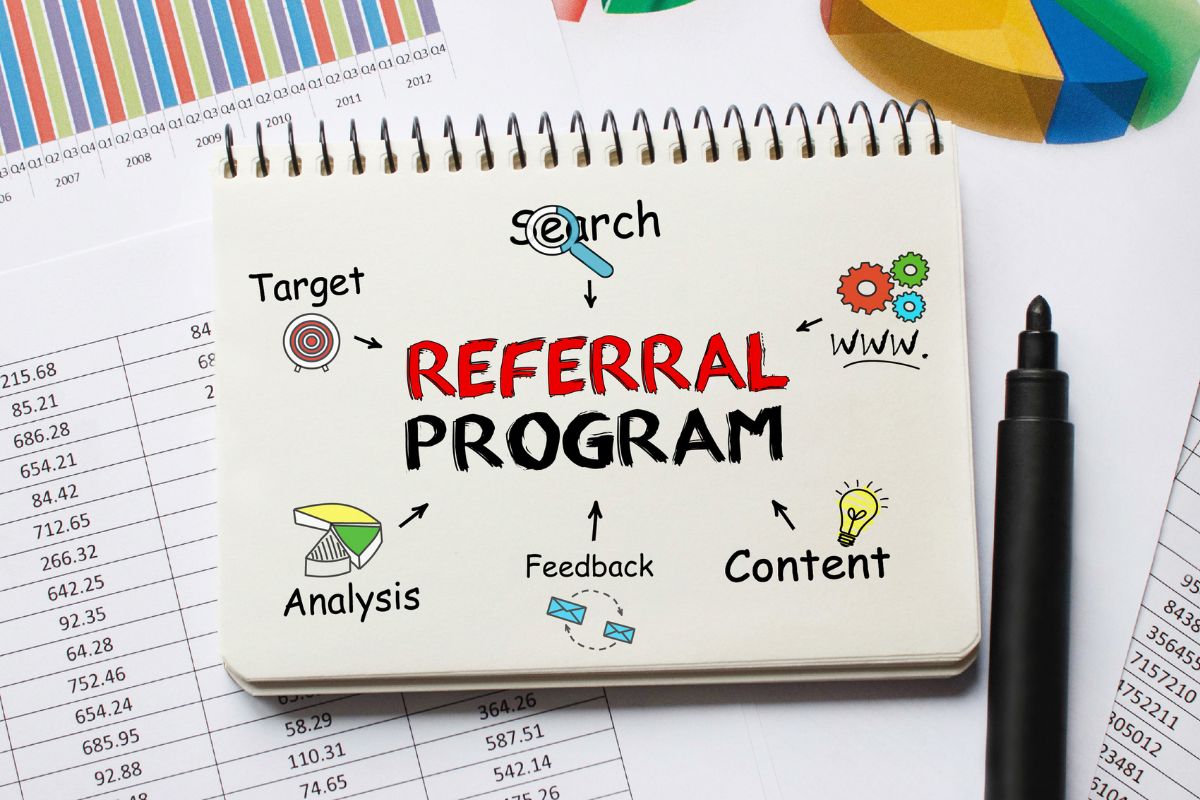
1. 92% of Global Consumers Say They Trust Recommendations from Family and Friends.
The Nielsen Global Trust in Advertising report revealed that 92% of global consumers say they trust recommendations that come from friends and family and other trust-earned media.
The survey included 28,000 respondents from 56 countries, so it’s a sizable sample.
(Nielsen)
2. 89% of Marketing Professionals Use Email Marketing for Lead Generation (Referrals).
The most common avenue of generating leads and referrals is via email marketing which is used by 89% of marketing professionals.
Another 93% of B2B (Business-to-Business) marketers use email to distribute content that encourages referrals.
(Tailwind)
3. In 2020, the Most Effective Referral Reward Type Was “Dollar Credit”.
Reports reveal that the three most successful rewards for referrals include the “dollar credit”, gift card, or percent discount programs.
Dollar credit is where you earn points, miles, or cash back by referring friends, family, or anyone to a business.
(FinancesOnline)
4. There Are 2.4 Billion Brand-Centric Conversations Occurring in The United States Daily.
Word-of-Mouth advertising is often overlooked by businesses, but when 2.4 billion brand-centric conversations are being conducted among U.S. consumers daily, you can’t ignore that method.
People are always talking about the products and services they love.
Also, they are always talking about the companies that provide these products and services.
(Annex Cloud)
5. 51% of Companies Using Referral Programs Find Them Effective for Maintaining Their Sales Channels.
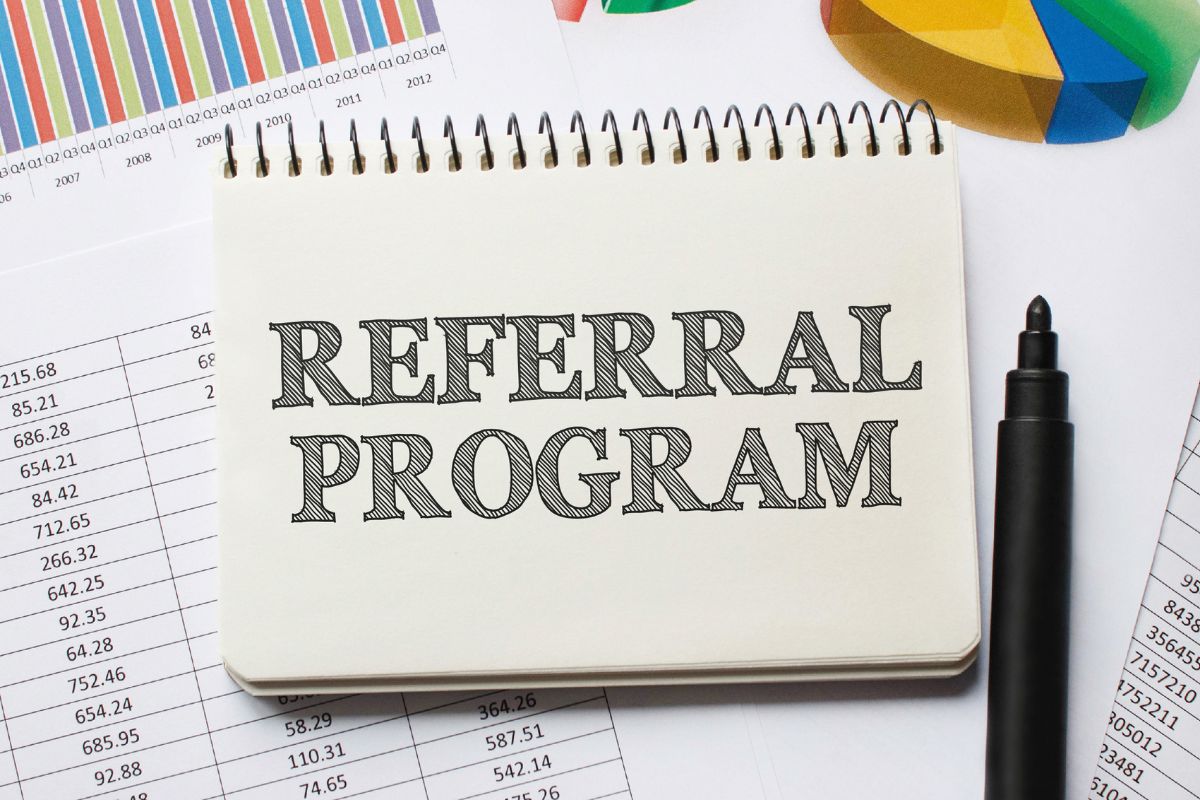
The fact that over half (51%) of companies use referral rewards find them effective for keeping their sales channels moving forward is sound enough proof to implement one.
Moreover, 55% of companies that use referral programs see this as an extremely effective sales strategy.
However, 35% of companies without referral programs
(Get the Referral)
6. 83% of Consumers Eagerly Refer Others After a Positive Customer Experience.
Interestingly, 83% of consumers are willing and eager to refer others to a product or service after they have had a positive customer experience.
However, only 29% do refer to someone. With the right incentives, that 29% could be increased.
(SaaSquatch)
7. 91% of Millennials Say They Would Consider a Purchase if The Recommendation Came from A Friend.
According to an Annex Cloud whitepaper, 91% of Millennials would think about making a purchase when they have gotten a recommendation from a friend.
Millennials take referrals seriously enough that another 48% say they are influenced by word-of-mouth advertising more than they are television ads.
(Annex Cloud Whitepaper)
8. 23% to 28% of Millennials Said They Wouldn’t Buy Something Because of Friends’ Disapproval.
How serious are Millennials about recommendations and referrals?
One study showed that 23% to 28% of Millennials would choose not to buy something if their friends disapprove of the company or product.
You can’t discount trusted recommendations.
(Annex Cloud Whitepaper)
9. Verbal Referrals Have a Proven 32% Conversation Rate for Sales.
According to Score.org, social media referrals may be large in number, but they aren’t as good at converting as verbal referrals that have a 32% conversion rate.
Social media only has a 1% conversion rate resulting in sales.
Lead forms have a 19% conversion rate and other conversion rates include email (17%), print cards (12%), and shareable URLs (4%).
(Score)
10. 91% of B2B Consumers Make Buying Decisions Based on Word-Of-Mouth Referrals.

Referral statistics show that B2B consumers make their buying decisions based on word-of-mouth recommendations.
Another 88% said they make buying decisions based exclusively on trusted recommendations.
(ReferralRock)
11. 88% of American Social Media Users Said They Would Like an Incentive for Sharing Products on Their Social Profiles.
Americans with social media accounts say they want an reward for sharing their products, which often includes the overall customer experience when they share them on social media.
This does differ according to age demographics since 95% of Millennials say the same thing.
Moreover, 77% of Americans using social media say they cash is their preferred reward.
(Ambassador)
12. 27% of Social Media Product/Service Referrals Come from Tablets.
Data from the first quarter of 2023 revealed that 27% of all social media referrals came from tablets.
Furthermore, social media referrals from smartphones have a share of 12% and desktops are last with a 2% share.
(EnterpriseAppsToday)
13. Referred Customers Are 18% More Apt to Become Loyal Customers.
As we have already addressed, referrals are more apt to convert to loyal customers and refer even more to your business.
In fact, 18% of referred customers are more loyal.
Another 16% remain loyal and lifetime customers, and 13.2% will spend more.
(FinancesOnline)
14. 85% of Brand Fans on Facebook Recommend Them to Their Friends and Followers.
If you think word-of-mouth advertising is dead, it may interest you to know that 85% of fans of brands on Facebook are recommending brands to their friends and followers.
You could say that Facebook users who are fans of brands on the platform become your own free marketing team on the social media channel.
(Annex Cloud)
15. Word-Of-Mouth Marketing Drives $6 Trillion (USD) in Yearly Consumer Spending.
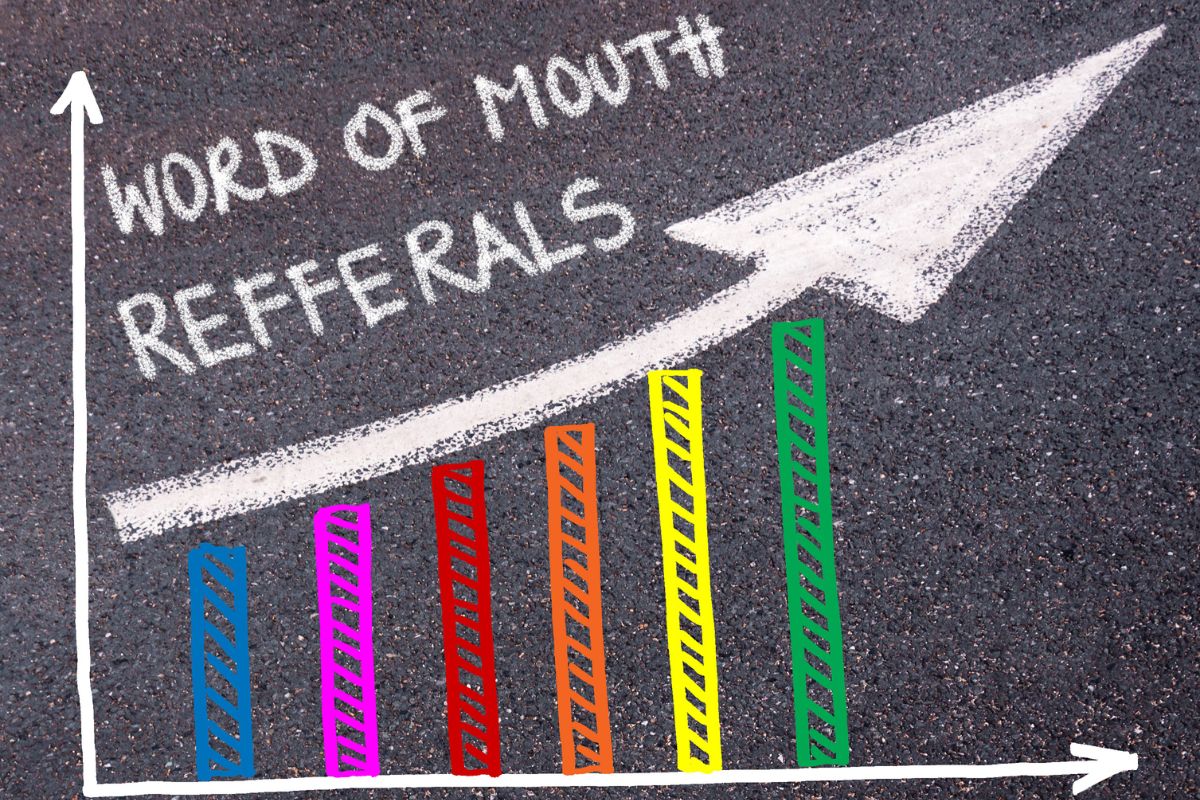
The impact of word-of-mouth marketing (referral marketing) generates a whopping $6 trillion (USD) in yearly consumer spending.
Additionally, it’s estimated to account for about 13% of all consumer sales.
(Invesp)
16. 60% of Business for Small Businesses Comes from Referrals.
Analytical data shows that small businesses gain 60% of their business via referrals.
Also, an estimated 86% of companies using referral programs see solid business growth over two years.
Moreover, 82% of small business owners say their new business comes from referrals.
(Invesp²)
17. Referrals Have Been Found to Be 36 Times More Successful than A Cold Call.
Cold calling is one of the less valuable methods for getting business leads.
In fact, referrals have 36 times more success rate over cold calls.
Moreover, offline word-of-mouth referrals can drive 5 times the sales than a one-time paid ad.
Overall, referral marketing gets a 5 times higher conversion rate over all other channels.
(99Firms)
18. 61% of IT Consumers Say Colleague Recommendations Help Them Make Buying Decisions.
Among Information Technology consumers, recommendations from their colleagues are the most important factor in making buying decisions.
This makes sense because their colleagues are more apt to know the scoop on innovative technology and related products and services.
(Capterra)
19. Customer Referrals Have a Share of 49% of The Most Effective Marketing Strategies Among B2B Vendors.
B2B vendors claim that their best marketing strategy involves customer referrals which have a share of 49% in effectiveness.
Personalized messages came in second with a 37% share and online events achieved a 35% share.
Moreover, investing in SEO marketing has a share of 31% in effective B2B marketing strategies and intent data lead generation has a 27% share.
This is all from the perspective of B2B vendors.
(Exploding Topics)
20. Only 29% of B2B Consumers Factored in Referrals from Trusted Sources for Making Purchasing Decisions.
In contrast to B2B vendors, B2B consumers said referrals don’t have the same impact with only 29% of them factoring referrals into their purchasing decisions.
While that seems lower than we would expect based on the B2B vendor experience, it’s still significant among B2B buyers.
(Exploding Topics)
21. 70% of Marketers Surveyed Say They Plan to Increase Their Word-Of-Mouth Marketing Spending.
Statistics show that 70% of marketers from a survey said they plan to increase their WOM (word-of-mouth) marketing spending.
Another 29% said they intend to increase their offline WOM marketing spending.
(Invesp)
22. Customer Referrals Grew by 425% During the Global Pandemic Lockdowns.
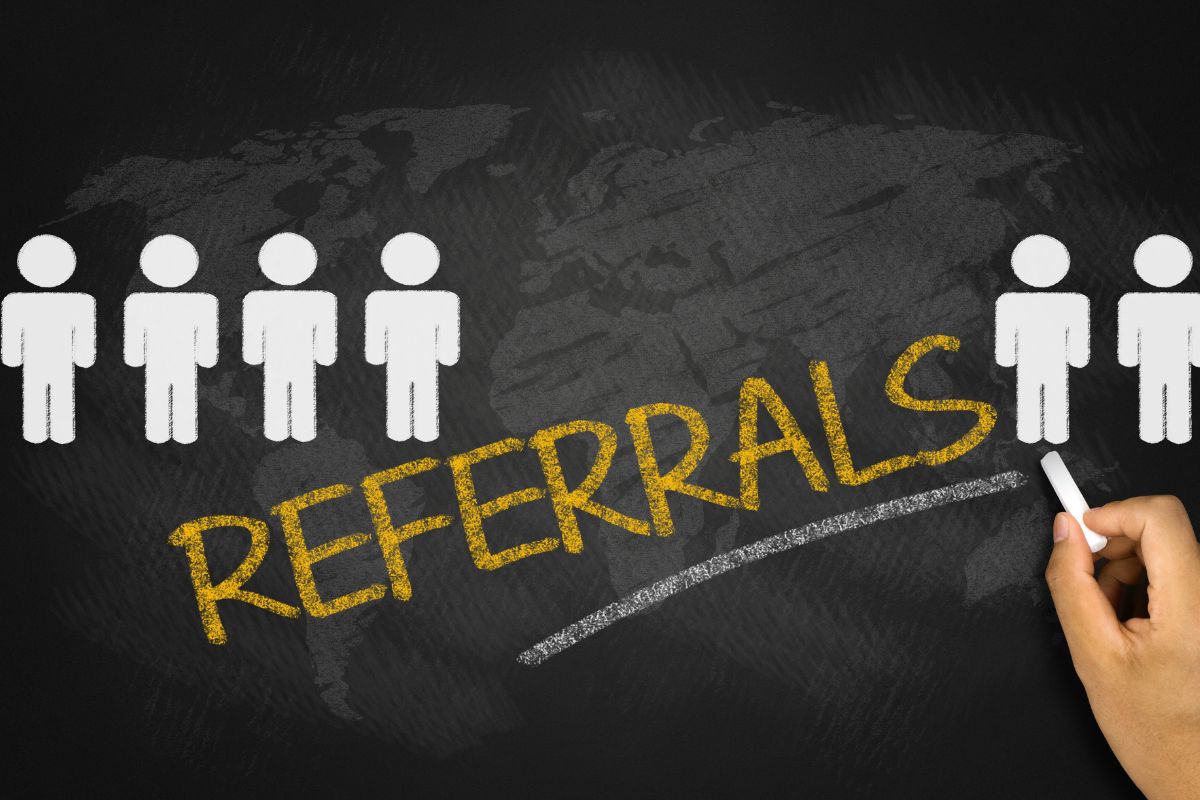
During the first round of pandemic lockdowns, referrals increased by 425%, which ran roughshod over the idea that referrals don’t work.
It showed the power of referrals in marketing because of how in improved ROI for most companies.
Without referrals during the lockdowns, we may never have realized the dynamic power of referral marketing.
(Ambassador²)
FAQs
What Is Referral Marketing?
Just like it sounds, referral marketing is used to get leads to your business.
It’s designed to encourage your customer base to refer their family and friends to your business.
It usually happens when incentives and rewards are offered for referrals.
What Are the Benefits of Referral Marketing?
The referral marketing method is one of the most effective and efficient ways to gain new customers.
Research has shown that customers that are referred to your website or business are more apt to be converted than those who aren’t referred.
Referrals also drive customer advocacy and loyalty overall.
What Are Some Referral Program Types?
In the business realm, there are two primary forms of referral programs which include the single-sided program and the double-sided program.
The single-sided program is the concept that only the customer who refers someone to your business gets a reward.
Therefore, if you refer someone to a product from a company with a single-side referral program, you will be the only one to benefit from the reward/incentive offered.
As you might expect, the double-sided program offers rewards to both the customer who referred and the newly referred customer.
In this instance, if you refer someone to a product/service, you will both benefit from the reward/incentive, which is likely to be two different rewards.
What Kinds of Rewards Drive Good Referrals?
Your target audience will drive the kind of rewards you offer.
However, the most popular rewards include free products or services, cash, gift cards, or significant discounts on products or services.
What Are Some Examples of Successful Referral Rewards Programs?
In terms of success, these are a few of the best referral programs you will find today:
Airbnb – This company offers a $25 credit for every referral that books a stay.
Dropbox – Dropbox offers 500MB in free storage for each referral to the company.
Uber – Uber offers free rides to the referrer and referred person.
Starbucks – Starbucks gives a free drink for referrals who buy something from the company.
Conclusion
How do you view referral marketing now that you know 92% of consumers trust family, friends, and other forms of trusted media?
It seems significantly effective from our point of view.
While referral marketing is a proven and effective method for getting new customers, you should also engage in other forms of marketing to drive lead generation.
Referral marketing is just one avenue for loyal customers and higher profits.
One thing you should take away from this data is that referred customers from family and friends are the easiest to convert into loyal customers.
This means they will also bring you referrals that can have a snowball effect in relation to gaining new customers.
If you aren’t already using incentives and rewards to gain customer referrals, will you try it now?
We hope these referral marketing statistics have been interesting, but more than that enlightening and helpful to you.







